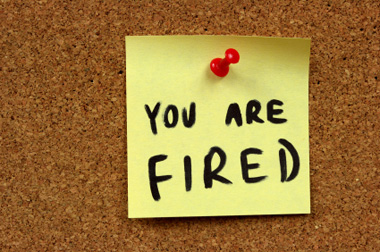 Everything you need to know about wrongful termination will take a few minutes to learn, and could be immensely helpful. If you are wrongfully terminated, you have certain rights, and a judgment in your favor will have one or more benefits depending on the laws of your state and the nature of the wrongful termination.
Everything you need to know about wrongful termination will take a few minutes to learn, and could be immensely helpful. If you are wrongfully terminated, you have certain rights, and a judgment in your favor will have one or more benefits depending on the laws of your state and the nature of the wrongful termination.
What is Wrongful Termination?
First, you need to establish that you were wrongfully terminated. You may believe that you have an inherent right to work for the company, but the truth is that most states adhere to what is referred to as an At-Will Clause. What this means is that employers and employees have the right to terminate employment at will, without providing for a due cause or allowing for severance or other post-termination factors. There are 9 states which do not have an At-will Clause:
- Alabama
- Florida (allows for only three exceptions)
- Georgia
- Illinois
- Louisiana
- Maine
- Nebraska
- New York
- Rhode Island
If you are terminated for an illegal reason, you need to identify that cause. There are not many causes available, and it will be up to you to provide evidence that such an infraction occurred. With few exceptions, the causes are:
Breach of contract – If you have an employment contract, either verbal or written, or if the company has an employee handbook which states or infers that a contract exists, you can only be terminated under the provisions of the contract.
Discrimination – Under the regulations of the Equal Employment Opportunity Commission, EEOC, you cannot be discharged for race, creed, age, or gender bias.
Sexual harassment – Any form of sexual harassment in the workplace is prohibited. Performing such harassment is grounds for termination, reporting it or being victimized by it is not.
Violation of state or federal labor laws – This provision can take many forms, including firing an employee who is on leave for reasons allowed under the law, such as a medical emergency. Other labor laws are designed to protect those who work overtime.
Retaliatory firing – You cannot be fired for refusing to perform an illegal act, even when ordered to do so. Likewise, you cannot be terminated for reporting an employer who permits, requests, or encourages illegal activity, including violating OSHA regulations.
How to Respond to Wrongful Termination
If you are wrongfully terminated for any of these reasons, you need to document the infraction to the best of your ability. This includes acquiring copies of pay records, collecting witness accounts, or providing other proof. You may have as little as 90 days to get the complaint filed, so proceed accordingly.
Do not lose your temper with the employer, make threats, or perform unprofessional actions. If you have been terminated, get witness testimony outside of the workplace. Do not re-enter the workplace once you have been asked to leave.
Once you have collected the proof, file a complaint with the EEOC. The commission will examine the evidence provided and decide whether a wrongful termination case exists. If the EEOC rules in your favor, you may be eligible for lost wages, job reinstatement, and any job benefits that were denied.
If the EEOC rules in favor of the employer, you have the right to file a civil suit against the employer. In some cases, this suit can be filed in tandem with the EEOC investigation, but it should usually be reserved as a final attempt to secure justice. Filing a civil suit while an EEOC investigation is in progress could potentially damage both cases.